Pests can harm your garden, but there are natural solutions available. A new piece of property, fertile soil, and lots of sun and water is all you should need for a successful vegetable garden. However, there are the invasions that you probably didn’t consider.
For instance, you have the blue jays that peck mercilessly at your tomatoes, and the chipmunks that burrow their way underneath the garden to nibble off the ends of your zucchini.
Likewise, there are the deer and rabbits that always find a way to enjoy your luscious green lettuce. If that’s not enough, the soil you have laboriously cultured and toiled may suddenly become the enemy and strangle your plants roots.
Along with the bigger animals, there’s also bugs, slugs, and whatever other nuisance you can imagine. Bugs can be sprayed, but home remedies are typically best for a veggie garden.
Home Remedies For A Healthy Veggie Patch
Gardeners around the globe have their own special concoction for their home remedies. Essentially, a combination of dish detergent, cooking oil, and water is the best and safest option, especially when you consider that what you’re spraying is what you’ll be eating.
Alternatively, you can take a page from my grandmother’s book of sage advice: recycle dishwater after hand washing the dishes and spray it over the plants at night.
How To Get Rid Of Slugs
Are you dealing with slugs? Over the winter, wash your used (uncooked) egg shells, crumble them, and save them for your summer garden.
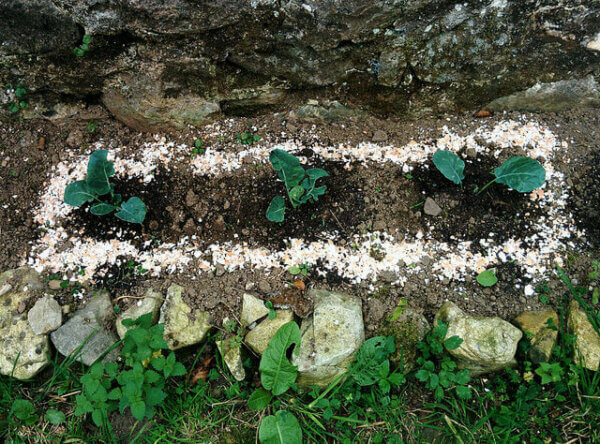
After tilling the garden and planting the seeds, sprinkle the crushed eggshells around the plants. Not only will slugs avoid crawling over these sharp objects, but the nutrients left in the eggshells will soak into the soil and enrich the garden produce.
How To Get Rid Of Squirrels And Chipmunks
As for squirrels and chipmunks: if there’s a will, there’s a way. Although, keep in mind that it’s an ongoing battle to detract these rodents from your veggie plot. One trick that can work is planting plastic forks, prongs sticking up, around new seedlings and leaving them there during the entire growing season.

This usually generates an interesting conversation during garden etiquette. Recently, a friend commented, “I noticed your plastic forks have reseeded themselves and are doing well.” To which I replied, “Yes, I have a healthy crop of plastic forks every year.”
It’s a simple solution, given that the prickly prongs of the forks poke the invasive rodents, something they don’t particularly like.
How To Get Rid Of Blue Jays
As the plants mature, birds, particularly Blue Jays, will take aim at certain produce like tomatoes. Since birds can be easily spooked, a scarecrow may help somewhat.
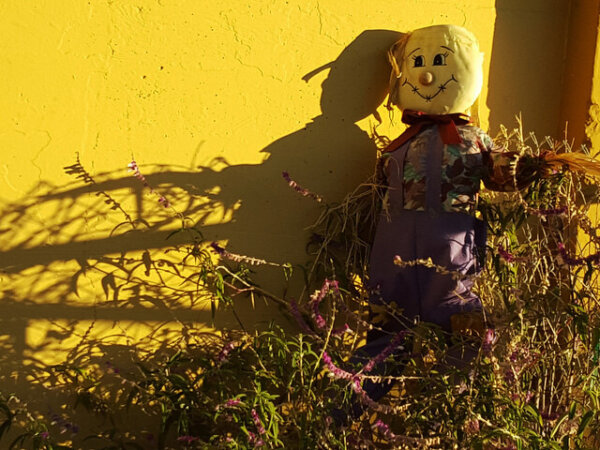
Another neat trick is to string a number of aluminum tart shells around your plants. The dangling, shiny objects are sure to scare the birds as the tart shells reflect the light. They will also jingle in the breeze, which adds to the “spook-element.”
The Basics
Doing all of the above will certainly help, but there are no guarantees. Lots of water, sufficient but not scorching sunlight, and good soil should be the key ingredients to a good veggie patch. Do keep in mind that there are other elements that come into play as well.
Gardening Isn’t Always Perfect
After several years of tilling, regular watering, and adding compost, manure, and soil, I thought my veggie garden would grow. Though as the summer progressed and friends started bragging about the produce from their garden, I couldn’t help but feel disappointed.
All I had were very small lettuce leaves, tomato plants still growing with no sign of fruit, zucchini plants half the size they should be, and the list goes on.
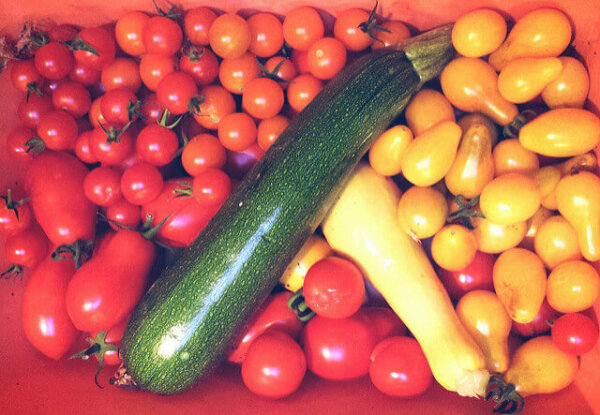
I couldn’t help but ask myself what I was doing wrong. I had tilled the earth and fertilized the plants with healthy compost and manure. Additionally, I weeded, watered regularly when the rain clouds wouldn’t assist, and sweat profusely over my labors. I did everything by the book!
Related Post: How To Make the Most of Garden Failure
The Source Of The Veggie Patch Problems
By late fall, I harvested my meek gifts from the garden only to be more dissatisfied with the flavor – or should I say, lack thereof. The frost eventually came and ended the growing season. I then dug the garden over as I did every spring and fall.

This time, however, I noticed a distinct problem: the soil had turned into a tightly knit mesh. This was definitely the cause of my plants struggle to survive. The next step was investigating what strangled my roots and why.
I did some research and asked around. What I discovered both amazed and worried me. After a lengthy drought, trees can send root-feelers throughout the rich garden soil and take nourishment from a veggie patch that is watered daily. After all, the trees need water too.
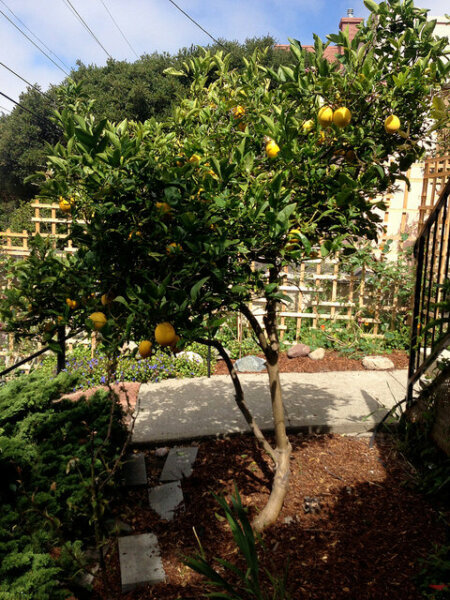
My well-watered veggie patch may well have become the source of nourishment the trees so desperately needed. Trees are important, as they provide shade from the blazing sun, but a balance is necessary. I had to weigh and consider the options.
The Solution: A Raised Garden
I pondered my potential solutions, and eventually thought to myself, “why not build a raised garden?” During the winter, as always, I spent time planning my garden. This time, however, I researched and planned a raised garden padded with a garden bed liner to prevent the invasion of tree roots.
I filled the raised garden bed with rich earth, given that most veggies and herbs do not require deep soil. On the other hand, my tomatoes required deep soil, so I decided to place them in very deep pots full of rich soil. Placing a single tomato plant per pot.
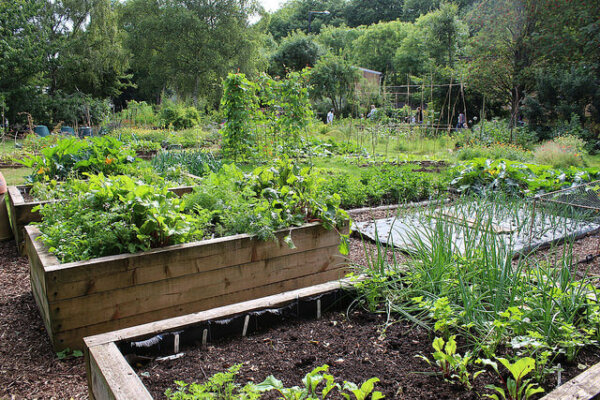
For root crops, such as potatoes, carrots, and onions, I dug deeper into the soil and bordered the space with logs or treated wood boards. Next, I laid out the garden bed liner, making sure that it covered the complete base and sides of the area. Finally, I piled it deep with rich soil so that the root veggies had room to root without being strangled.
A New-Found Determination
Spring arrived along with my fortified determination. I had planted a veggie garden, one that I was proud of and hoped to reap the full rewards of my hard work from. In my experience, for every problem there is a solution. Sometimes, the solution just requires a bit of ingenuity and creative thinking.
I have found you don’t have to pollute your garden and the environment to keep the bugs under control, nor do you have to kill every rodent or intruder to protect your produce. You don’t even have to clear cut trees for miles around in order to prevent the trees from strangling your veggie roots.
There is always a way, always a solution. It may take some time to sort out the problem and remedy the issue, but it can be done and the rewards will be worth the effort!
Today’s post is brought to you by award-winning author and artist, Emily-Jane Hills Orford. When this author isn’t writing, creating collage paintings, working on her needlework or composing, you’ll find her in the garden. Even in the winter, gardening is not far from her thoughts as she plans and prepares for the next season and the next growing adventure. Using pressed flowers from her garden, this author/artist/composer is gardening indoors with multi-faceted garden ideas re-created on canvas.

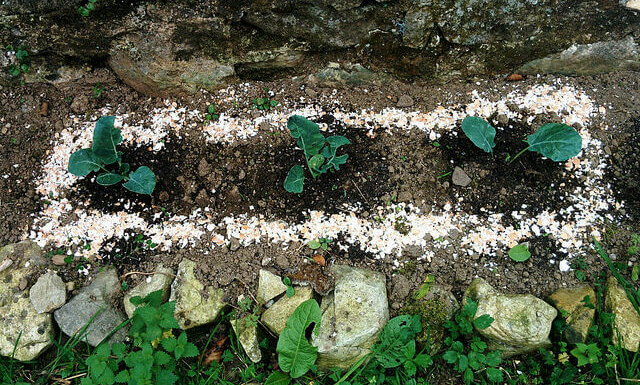








































good read
I, personally, wouldn’t use treated lumber for a raised garden. It has chemicals in it, and I wouldn’t want those chemicals in my veggies! The last raised garden I had, I used cement blocks. I even filled the voids with dirt and planted herbs or flowers for an attractive look.
When Bluejays are around your tomatoes they are there for the worms IIRC so why chase em away????
This article is less about pests than it is about the basics; soil, drainage, water, light and FERTILIZER. I don’t know how fertilizer got lumped in with pesticides but it is not a pesticide. ‘Rich’ soil doesn’t contain the important chemicals (nutrients) with which photosynthesis can operate. Rich soil is full of organic matter but organic matter/compost is NO substitute for balanced fertilizer. Everyone should do at least one soil test with their cooperative extension service! Compost decomposed hopefully and raw manures are not a replacement for fertilizer. This person writing the article had unknowingly added too much nitrogen. Nitrogen that is higher than Phosphorus and Potassium will cause vegetative growth (too much and that will attract pests weaken the plant and cause malformation) and certainly there will be no reproductive growth. Even the soil in ancient ecosystems although lots of organic matter has NO CHEMISTRY necessary for what we humans need to grow…such as crops. These chemicals and I say chemicals instead of nutrients because by golly ‘nutrients’ mean ‘food’ to us humans and more the better will kill plants…these chemicals have to be added judiciously with lots of knowledge for any type of harvest or healthy plants. Including potted plants.
Raised beds do not need sides of any sort. They need a 6″X6″ trench at the bottom of the bed. I don’t care what soil one has, double digging down at least a foot, raking down, using a big piece of plywood to ‘compact’ the 3′ of soil double dug and fruffed up, then digging the trenches is the best way to prepare a bed. I throw DECOMPOSED organic matter into the soil as I work. Smooth, compact then plant my starts or seed (never in rows, wastes too much of the bed). After planting I top dress the bed with more decomposed organic matter. I ROTATE crops consistently. I have a trap crop for flea beetles, I cover my brassicas after planting for a good month before taking the row cloth off. Forget ‘companion’ planting. Have never found anything to support that. And my gardens are lush and fruitful. I use an organic fertilizer where NPK is 5-.7-9…the N is the lowest number unless I am fertilizing my salad bowl bed, kale, cabbage, Rhubarb…then I go with even numbers. Soil is soil is soil…there is no bad soil. I’ve had gardens made from Caliche clay…stuff that turns to snot after a rain. Raised beds, trenches to drain water where you want it to go…decomposed organic matter. Fertilizer as per crop. I also know how to see what and when plants are lacking or in excess with chemistry. That takes awhile to learn. I would love to post pictures of raised beds that are far better than raised beds constructed with lumber, blocks…how to do that, Kane?
Needed to add, in stable ecosystems all the chemistry is tied up in the biomass. You’ve heard that when the rainforests are removed that soil is pretty much worthless. Perhaps one crop is all it might support. Pests need to be understood. There is no way to eliminate pests. Need to get over a bit of destruction. I’ve found life to be simplified when I feed the deer, rabbits, provide trap crops for insects (same thing) have cats around to control rodents and sigh, limit the bunnies…harmony is what gardening is all about. Get along with each other and knowing the rest of your family members makes harmony easy. And relaxing about a little damage. I’ve got no problems and I live with elk, deer, feral pigs, raccoons, jays, ravens, RABBITS galore, mice and rats and chipmunks…My greenhouse is fenced 3′ high with wire but because I feed the bunnies they don’t try to dig into the greenhouse. I’d love to send pictures of my raised beds. I will never ever plant plants into unprepared beds with the exception of trees. Last 5 years I’ve had to grow in almost pure pumice and with the constant addition of decomposed organic matter that soil is just yummy. Still, I always add fertilizer. Not too much, just enough. Pesticide includes milk water 1:9 ratio for powdery mildew. That is it. Rotation of crops, pH testing the soil to get the proper pH for the crop and growing green cover crops…and FANS. Blowing hard 24/7!